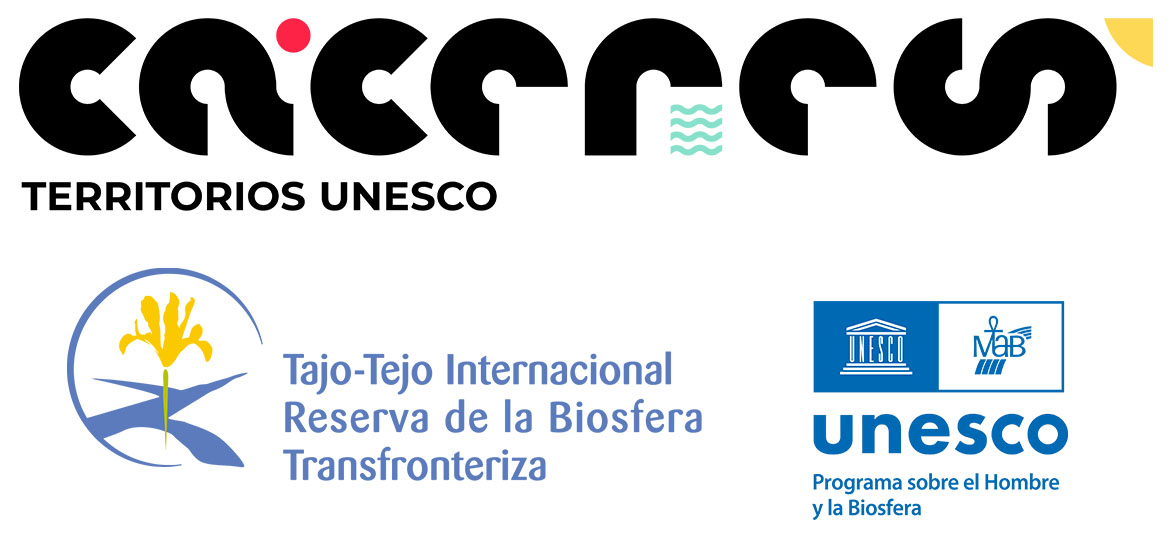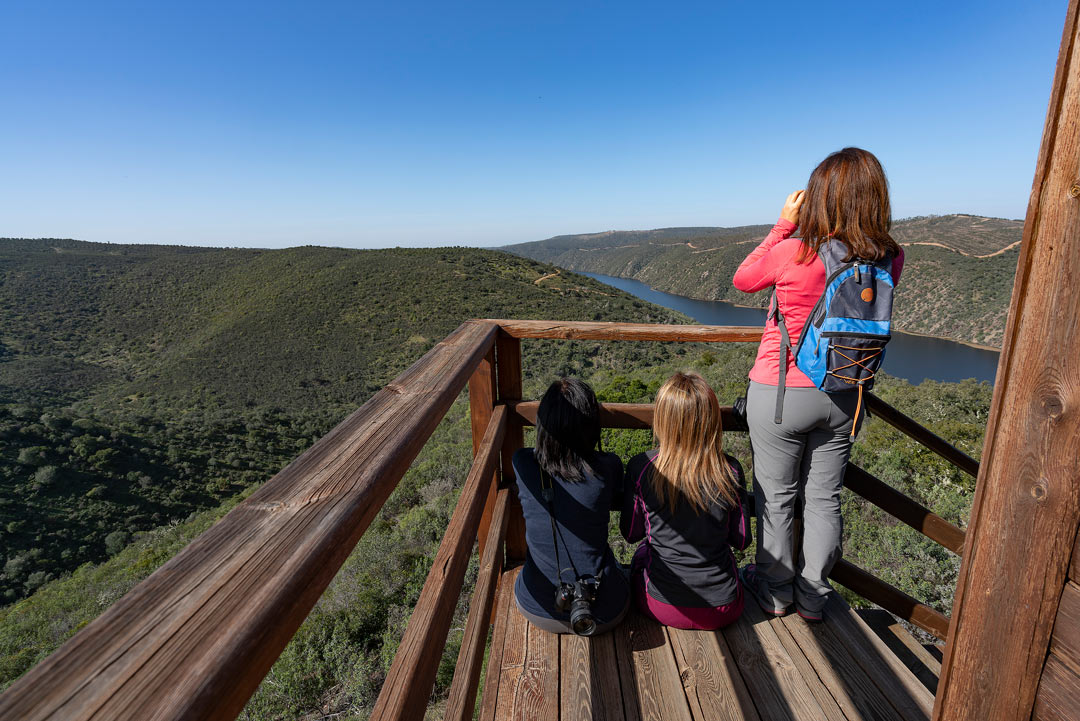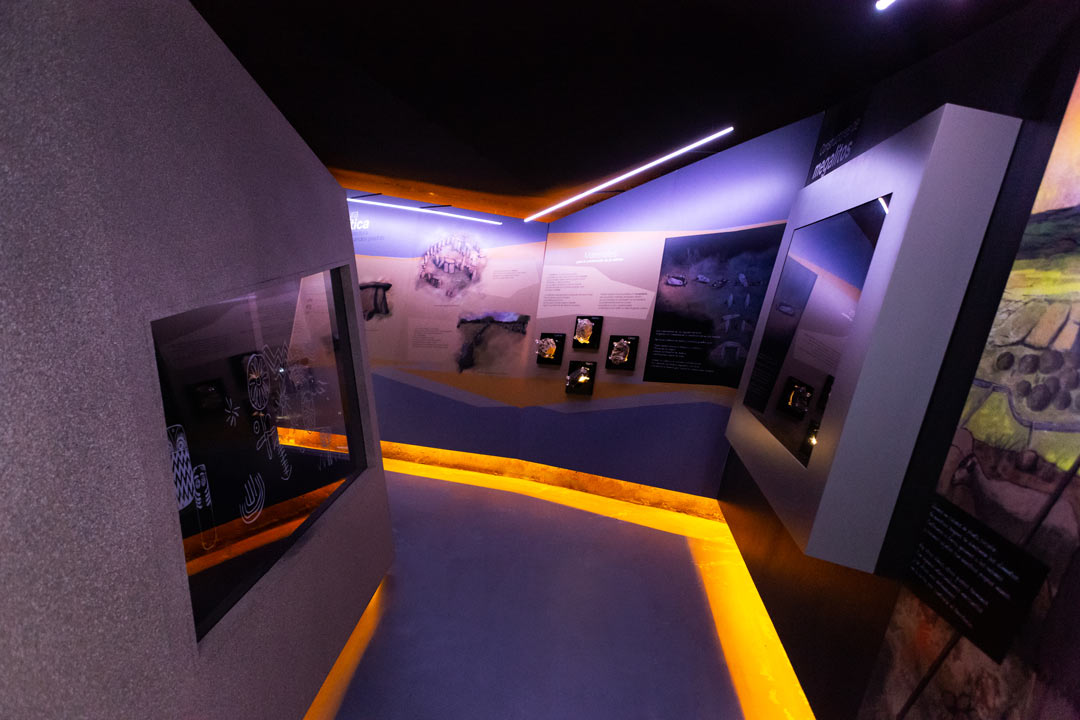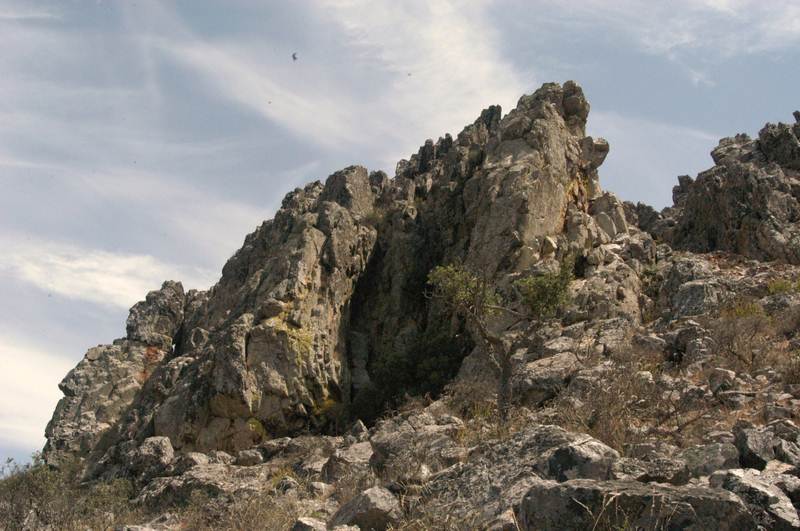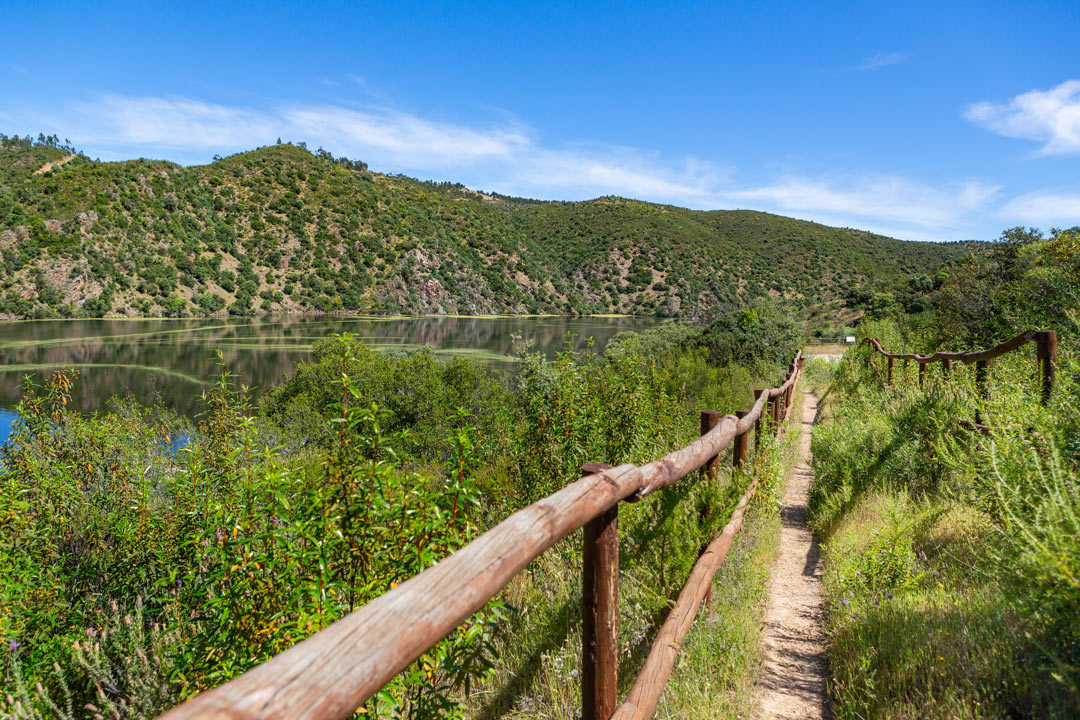Santiago de Alcántara
An enclave to understand the essence of the Tajo Internacional Biosphere Reserve
Contact
Santiago de Alcántara Town Hall
Plaza de España, s/n
10510 Santiago de Alcántara, Cáceres (Extremadura)
The origin of Santiago de Alcántara appears to be a Roman colony which was established to the south of the current location of the village at Las Eras de Ulloa near the Aurela Stream, in which gold was sought. Subsequently it was occupied by the Arabs until 1172, in which year it was seized by the knights of the Order of Santiago and Alcántara. Even so, the land currently occupied by the village has seen the passage not only of Romans and Arabs but also of prehistoric settlers, Lusitanians, and Visigoths.
The agricultural exploitation of the land led to the breaking up of the populated area. Some locals moved to the current location of Santiago while others continued in the so-called Santiago el Viejo, which subsequently disappeared as a result of the continuous conflicts between the Portuguese and the Spanish. In the 19th century the village changed its name to Santiago de Carbajo only to change again in 1960 in favour of the current Santiago de Alcántara.
A visit to this village and its surrounding area is essential in order to get to know the essence of the Tajo Internacional Biosphere Reserve. Santiago de Alcántara holds the Megalith Interpretation Centre and the “El Péndere” Interpretation Centre. Both will help us to prepare a complete visit of the artistic assets of the village (the Roman colony of Las Eras de Ulloa, the necropolis of La Lagunita, and the 16th/17th-century Church of Our Lady of La Consolación). The caves of El Buraco and La Gragera deserve special mention; they can be reached on marked routes.
You can’t leave without seeing…
This original space represents a mound of approximately 200 square metres. Its installations are underground and it has the appearance of a burial mound (in a subliminal way it invokes the entrance of a dolmen).
This space has varied contents on the megalithic complex of this area, which is one of the most important in Europe. It contains full documentation to show the megalithic richness of various municipalities in the area and includes information on Portuguese villages rich in megalithic elements. Visitors to the museum can contemplate various exhibits, panels, and audiovisual resources.
Moreover, the interpretation centre is part of a megalithic route of 7 kilometres known as ‘El Buraco’ which is fully marked. It starts from the Chapel of San Cristóbal which is about 1,500 metres from the village and explores the Chozo de Juan Galavis, the Dolmen Culture Interpretation Centre, the El Buraco Cave, and the natural viewpoint alongside the Cabeza de Buey hill-fort.
Shelter of El Buraco: A cave in the rocks containing cave paintings. 25 motifs have been found, among which predominate anthropomorphous figures with arms akimbo and with no heads although bars and dots also appear. The views are wide-ranging and spectacular.
Peña Grajera: This cave has cave paintings in the form of 6 anthropomorphous figures that can be visited. Access is only possible when the Aurela Stream which runs before it is dry or holds little water. It is also an excellent place for observing flora and especially fauna.
This route, which starts at the “El Péndere” Interpretation Centre and reaches the banks of the River Tajo where the Fuente de la Geregosa stands, is considered to be one of the hot springs of the highest quality in Extremadura. There and back the distance is 14.6 km which can be completed in approximately 3 hours 20 minutes.
The route represents a link between two important protected spaces: the “Sierra de San Pedro” Area of Regional Interest, the limit of which is the village of Santiago de Alcántara itself, and the Tajo Internacional Nature Reserve. All along the way it is possible to observe large birds of prey in flight such as griffon vultures, golden eagles, Bonelli’s eagles, Egyptian vultures, and booted eagles, in addition to numerous woodland birds and even the shy black stork.

